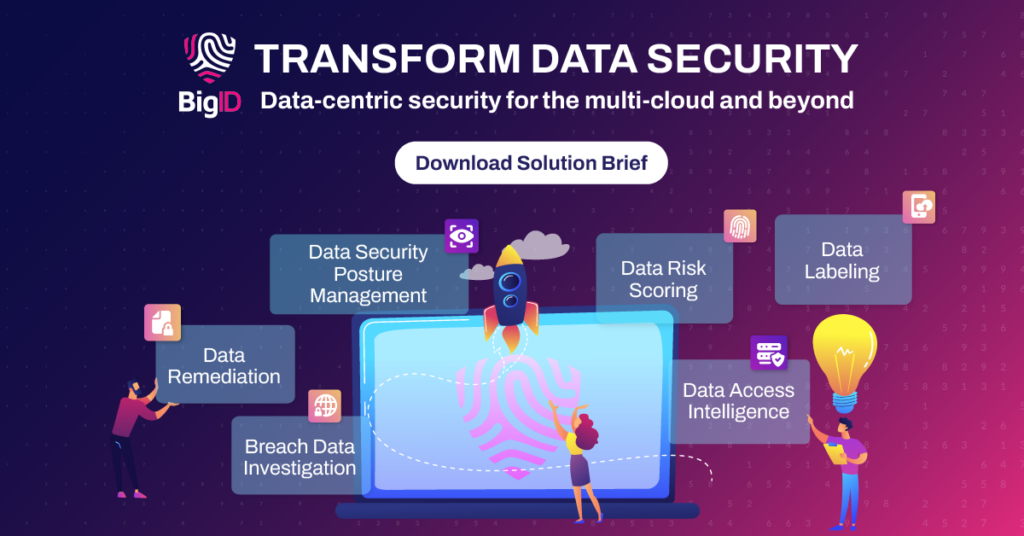Data security is a concern for every organization, and it’s not going away. In fact, the issue is becoming more complex with the introduction of new technology. For example, the rise of large language models (LLMs) that power generative AI systems bring both opportunity and risks.
Their capabilities offer robust tools to safeguard our valuable information and strengthen defences against cyber threats. But, we can’t ignore that the technology itself introduces new vulnerabilities and security issues that must be carefully managed.
How can organizations use Gen AI to enhance security for their stored information while also securing the technology itself?
The Benefits of Generative AI for Cyber Security
Precisely Detect Anomalies
Generative artificial intelligence (or GenAI) algorithms have remarkable pattern recognition capabilities, which can enable your organization’s security operations to identify anomalies and potential security breaches with precision.
It’s also a faster solution than manual monitoring, with a study from IBM indicating that organizations using AI for security can detect threats up to 60% faster. This allows you to focus on actual threats instead of dealing with false alarms, and gives you the clarity and time to focus on developing more efficient and effective threat mitigation strategies.
Fortifying Access Controls
Data can be compromised if it’s able to be retrieved by someone without the relevant authority, but Generative AI can be used to safeguard against this. It prevents unauthorized access by reinforcing access controls.
GenAI algorithms can identify suspicious activities by learning and adapting to evolving patterns. The system won’t act if the user behaviour matches acceptable parameters, reflecting a security policy tailored for generative AI security. However, if it identifies a potential threat, it will swiftly notify security personnel.
Strengthening Encryption Protocols
The encryption of confidential data helps protect information from unauthorized access. Generative AI can significantly enhance encryption protocols by generating robust cryptographic keys and optimizing encryption algorithms, adding an extra layer of defense to safeguard sensitive information with strong security.
Battling Evolving Threats with Adaptive Solutions
Dynamic and adaptive security solutions allow you to keep up with evolving cyber threats. Generative AI can help produce this proactivity by learning from and adapting to new threats in real-time. With this information, you can create defense mechanisms that stop new threats in their tracks, identifying emerging threats and taking preemptive actions to avoid issues.
Enhancing Cybersecurity Training and Simulation
The human factor remains a significant vulnerability in data and cybersecurity. Luckily, generative AI can play a pivotal role in mitigating this risk.
Generative AI can simulate realistic cyber-attack scenarios, which can train your employees to effectively recognize and respond to such attacks. Through immersive training experiences, you can strengthen your company’s security awareness programs to reduce the likelihood of human error and improve your overall security posture.
Generative AI capabilities represent a game-changer in information security. By harnessing its power, you can revolutionize your defense strategies and stay ahead of evolving cyber threats.
Clearly, generative AI offers invaluable contributions in anomaly detection, access control, strengthening encryption, threat mitigation, and cybersecurity training. Embracing it is an imperative step towards ensuring a secure and resilient digital future, incorporating robust security measures.
We must, however, ensure that this is done in a safe and responsible way, as generative AI comes with its own security concerns that must be mitigated if we’re to harness it in protecting data.
Generative AI Security Risks and Threats
Of course, no technology is without challenges and there are some potential security flaws involved in the use of AI in cybersecurity. However, if you’re aware of these security risks of generative AI, you and your team can successfully mitigate them.
Here are some concerns with using AI applications and how to alleviate them:
AI Model Safety
LLMs use large amounts of data to learn and understand patterns to predict or generate solutions for complex problems. All of this data is now available for the model to reuse and give out in the form of generated content.
While this makes them powerful tools, it also introduces complex security risks that organizations must manage carefully. If not governed correctly, AI models can memorize sensitive information and reproduce biases.
A model without strong security algorithms can become a vulnerability for the organization that uses it. The key risks are:
Data Poisoning
A data poisoning attack works by altering the training data used to construct a GenAI model. They can subvert its behavior by injecting malicious or misleading data points into the training set, which (for example) could introduce a blind spot that allows attacks to go undetected or generate unsafe responses in critical systems.
Reverse Engineering and Model Theft
Attackers who gain access to a generative AI could steal its model or reverse engineer its parameters. Doing so can reveal intellectual property and even security behaviors, which attackers can then exploit to bypass protections and identify weaknesses in your system.
Privacy Leaks
Even without direct attacks, models can unintentionally expose private or sensitive data in their outputs (known as model leakage). For example, generative AI trained on customer data may reveal personally identifiable information if prompted improperly.
To ensure AI data privacy, you need to focus on implementing strict security policy and AI governance through:
- Data discovery
- Data risk assessment
- Security
- Entitlements
Use of Enterprise Data
Your business may employ generative AI to process and analyze enterprise and external data. As a result, you’ll need to manage this data as per regulations for security and compliance. You must understand what data is available to your system since you don’t want sensitive customer data used without the appropriate controls.
The other reason you need data control in such systems is the AI’s ability to mimic human communication. You need checks and controls in place to prevent misuse of the stored information by someone who can manipulate your generative AI tool.
Look out for the following risks:
Social Engineering
If attackers gain access to your enterprise data and can manipulate AI prompts, they could use the system to create highly convincing emails or other communications targeting your employees and customers. These AI-powered attacks can trick users into sharing sensitive details, transferring money, or other actions that compromise security.
Overreliance on AI Outputs
As AI gets more and more popular, we risk depending on its content too much without implementing adequate verification. This can cause the spread of dangerous inaccuracies or even outright lies. Unfortunately, this can have real-world impacts that cause harm to people.
Responsible AI data usage requires:
- Data inventory
- Data classification
- Data access and entitlements
- Data consent, retention, and residency
- Data usage audit
Prompt Safety
A prompt is any input you provide to your AI system to get a response. These can be queries from users or system-generated prompts. System prompts, when designed well, result in ethical AI behavior. However, threat actors can use them as attack vectors or malware, if the model hasn’t been taught to recognize and reject dangerous prompts.
To make sure your system prompts are secure, you need to look for:
- Prompt injections and jailbreak
- Sensitive data phishing
- Model hijacking/knowledge phishing
- Denial of service
- Anomalous behavior
- Shadow AI
AI Regulations
Despite its widespread use, AI is a technology that’s still in its infancy. As generative AI evolves, the regulations and framework to govern it will also change, addressing new privacy and security challenges. There are several AI data governance laws in place to protect sensitive or confidential information, such as the General Data Protection Regulation (GDPR), the California Privacy Rights Act (CPRA), and the European Union’s AI Act (EU AI Act).
Similarly, other countries are developing their own laws and regulations to protect personal information.
The thing is, these laws and policies might change over time. If you’re a business that leverages generative AI, you must implement internal policies and processes that protect your customer data as per regulations. That means you should stay ahead of the regulations, so you aren’t blindsided.
GenAI Security Best Practices
Conduct Risk Assessments on New AI Models
When looking to implement a new AI model, particularly if you’ll be using it to help with data protection, it’s essential to assess the risks associated with the technology. This will help you identify any security vulnerabilities in the system that could lead to data or privacy breaches or unreliability. At this stage, it’s also crucial to confirm their compliance with recognized data security standards, such as the GDPR.
Validate and Sanitize Input Data
Artificial intelligence, including Gen AI, is only as secure as the inputs it processes and the outputs it generates. You can help prevent security threats like prompt injection attacks by thoroughly validating and sanitizing any input data, ensuring the model is only fed reliable and ‘safe’ information. Similarly, filter all outputs to prevent any malicious or sensitive content from slipping through.
Implement Access Controls and Authentication
As with any form of data security, access controls and effective authentication are key to protecting AI systems by limiting who is able to interact with them. For instance, using multi-factor authentication and role-based access controls, along with regularized audits, can help prevent AI from being used inappropriately.
Have a Robust Governance Framework
Having regulated controls in place to ensure the security and dependability of Generative AI models allows any breaches and degradation to be detected early. This framework could include running regular audits and having tools in place to monitor unexpected behaviors, or minimizing training data to only what’s necessary.
Invest in Data and AI Training
An effective way to help avoid the risks associated with AI application security is to ensure all employees are educated on the potential threats. From learning to recognize the limitations of AI systems to spotting potential risks, having all teams be mindful and accountable when it comes to using AI is a safeguard against security threats in itself.
Keep up With New Threats to Generative AI
We’re still just at the beginning of the evolution of AI-usage in business. As new capabilities emerge, so will new risks that you’ll have to address. It’s crucial to keep your ear to the ground to keep up with emerging threats and how they could impact data security. Regularly update your security protocols to help mitigate any forming vulnerabilities and remain resilient.
How BigID Uses Generative AI Safely for Enhanced Data Security
BigID is the leading provider of data privacy, security, and governance solutions leveraging advanced AI and machine learning responsibly for deep data discovery and classification. Gone are the days of hundreds of manual hours and the inevitable human error that comes along with classifying and cataloging massive amounts of sensitive data.
BigID’s Security Suite offers intuitive and flexible tools like access intelligence and data remediation. Utilizing AI safely, BigID automatically scans, identifies and correlates privacy-sensitive data based on context and assesses potential risk — giving you a better understanding of your most valuable assets.
Download Our Data Security Brief.



